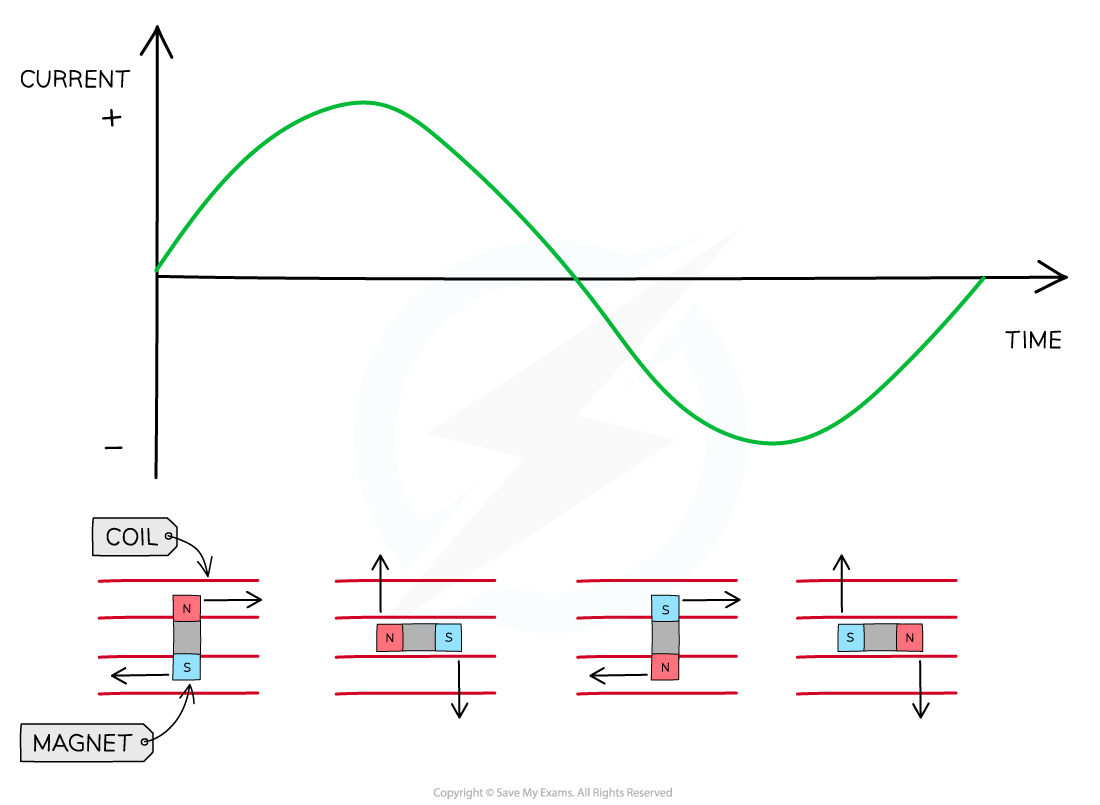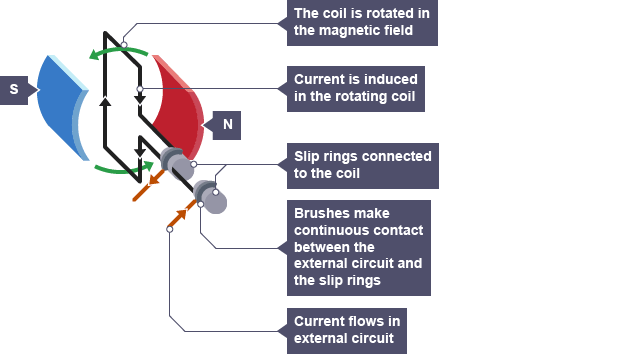Chapters
Generators play a vital role in our modern world, powering homes, industries, and essential devices. Understanding their construction, working principles, and the fascinating energy transformations they undergo is vital to comprehending the generation and utilization of electrical energy. In this article, we will delve into the types, construction, working principles, and energy transformation of generators. By the end, you'll have a solid foundation of how generators transform energy.

What are Generators?
"Generators are devices that convert mechanical energy into electrical energy"
They are commonly used to produce electricity in power stations. Generators work on the principle of electromagnetic induction, which involves moving a coil of wire in a magnetic field. When the coil rotates, it cuts through the magnetic field lines, causing a current to be induced in the wire. This current can then be harnessed and used as electrical energy.
Types of Generators
There are two types of generators: AC generators and DC generators.
1. AC Generators (Alternators)
AC generators are used to produce alternating current. They consist of a coil of wire called an armature that rotates within a magnetic field. As the armature rotates, it cuts through the magnetic field lines, causing the magnetic flux passing through the coil to change. According to Faraday's law of electromagnetic induction, this change in magnetic flux induces an alternating current in the coil.
Components of AC generators
AC generators typically have the following components:
- Rotor: The rotating part of the generator that contains the armature.
- Stator: The stationary part that consists of a set of magnets or electromagnets to create a magnetic field.
- Slip Rings: The contacts that allow the generated alternating current to be transferred to an external circuit.

2. DC Generators
DC generators are used to produce direct current. They operate on the same principle of electromagnetic induction as AC generators but use a device called a split-ring commutator to convert the induced alternating current into direct current.
Components of DC Generators
DC generators typically have the following components:
- Armature: A coil of wire that rotates within a magnetic field.
- Split-ring Commutator: A device that reverses the current direction in the armature coil at the appropriate time, ensuring that the output of the generator is direct current.
- Brushes: Contact points that connect to the split-ring commutator, allowing the direct current to be transferred to an external circuit.
It's important to note that AC generators are more commonly used in power generation and distribution systems, while DC generators are often used in applications such as battery charging or small-scale electrical systems.
Working Principle of Generators
Generators convert mechanical energy into electrical energy using the principle of electromagnetic induction. The basic working principle involves moving a coil of wire within a magnetic field.
- Magnetic Field: Generators have a stationary component called the stator that produces a magnetic field. This can be achieved using permanent magnets or electromagnets.
- Coil of Wire (Armature): Inside the generator, there is a coil of wire called the armature. The armature is usually made up of multiple loops of wire.
- Relative Motion: The armature is connected to a mechanical source, such as a turbine driven by steam, water, or wind. When the mechanical source rotates the armature, it starts moving relative to the magnetic field produced by the stator.
- Electromagnetic Induction: As the armature moves, it cuts through the lines of magnetic flux in the magnetic field. According to Faraday's law of electromagnetic induction, this changing magnetic field induces an electromotive force (EMF) or voltage across the ends of the coil.
- Current Generation: The induced voltage causes an electric current to flow through the coil. This current is typically alternating current (AC) in an AC generator or direct current (DC) in a DC generator, depending on the type of generator.
- External Circuit: The generated current is transferred from the generator to an external circuit through connection points called slip rings (in AC generators) or brushes and a split-ring commutator (in DC generators). The external circuit can then utilize the generated electrical energy to power various devices.
- Regulation and Control: Generators can be regulated and controlled to maintain a constant voltage or frequency. This is achieved through mechanisms like voltage regulators or governors, which adjust the speed of the mechanical source or control the strength of the magnetic field.
Overall, generators provide a means to convert mechanical energy into electrical energy by utilizing the principles of electromagnetic induction. Understanding this working principle is essential for comprehending the generation and distribution of electricity.
Energy Transformation in Generators
In a generator, energy undergoes multiple transformations. Here's an overview of the energy transformations that occur in generators:
- Mechanical Energy: Generators start with a source of mechanical energy, such as a turbine driven by steam, water, or wind. This mechanical energy is the initial form of energy that is supplied to the generator.
- Kinetic Energy: The mechanical energy is transformed into kinetic energy as the turbine rotates. The rotation of the turbine provides the necessary mechanical force to drive the generator.
- Electrical Energy: Through the process of electromagnetic induction, the kinetic energy is further transformed into electrical energy. As the coil of wire (armature) rotates within a magnetic field, the changing magnetic field induces an electric current in the wire. This current represents the electrical energy generated by the generator.
- Transfer of Electrical Energy: The electrical energy produced in the generator is then transferred to an external circuit through connection points such as slip rings and brushes (in AC generators) or brushes and a split-ring commutator (in DC generators). These connection points allow the electrical energy to flow from the generator to the external circuit.
- Useful Energy: Once the electrical energy reaches the external circuit, it can be utilized to power various devices and perform useful work. For example, the electrical energy can power lights, appliances, motors, or charge batteries. This transformation of electrical energy into various forms of useful energy is where the generator's output is ultimately put to practical use.

It's important to note that during these energy transformations, there are various losses that occur due to factors such as resistance in the generator's components and frictional losses. These losses can result in the conversion of some of the input energy into other forms, such as heat or sound, reducing the overall efficiency of the generator.
Understanding these energy transformations is crucial for comprehending the conversion and utilization of energy in generators, as well as for understanding the principles of energy conservation and efficiency.













You are the best,, coz you have gotten content about the topics
Hello ! Glad to hear that you’ve found the content useful!